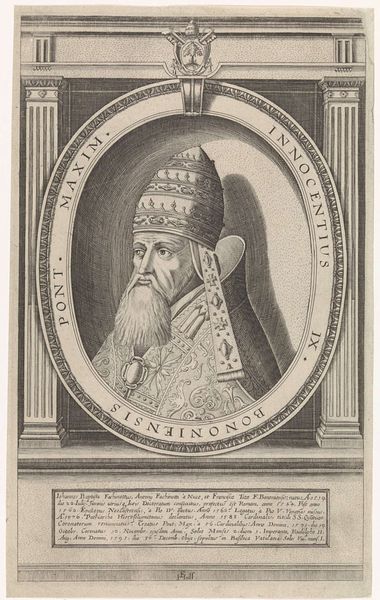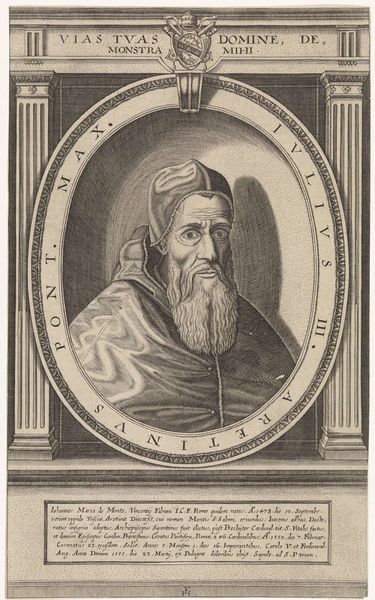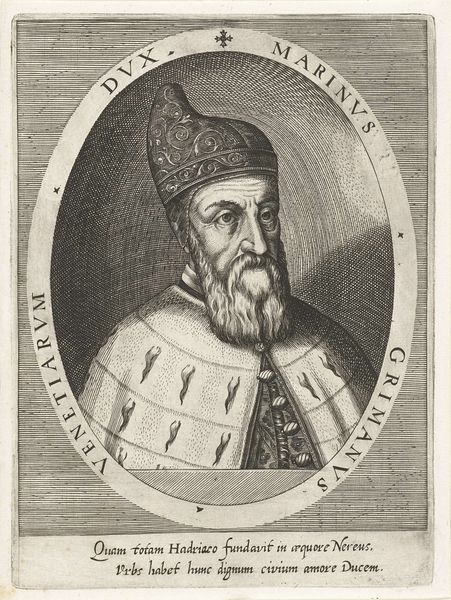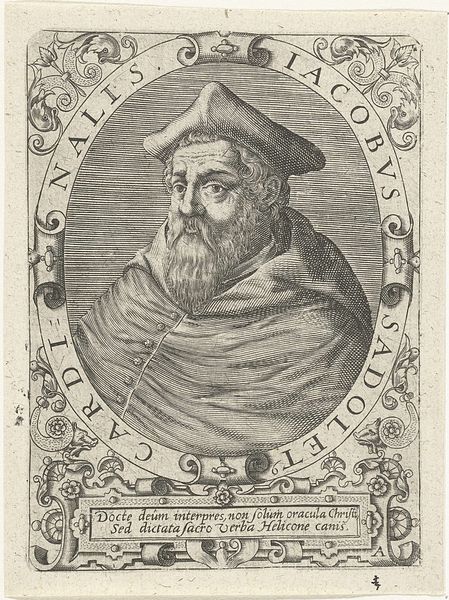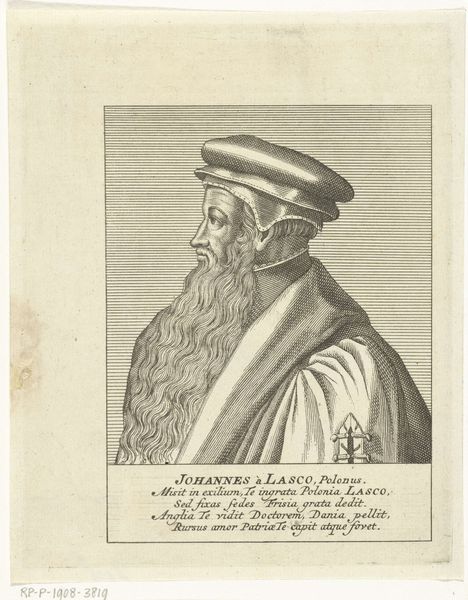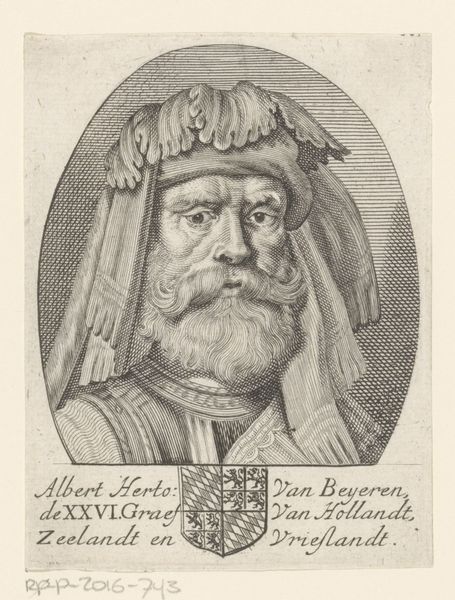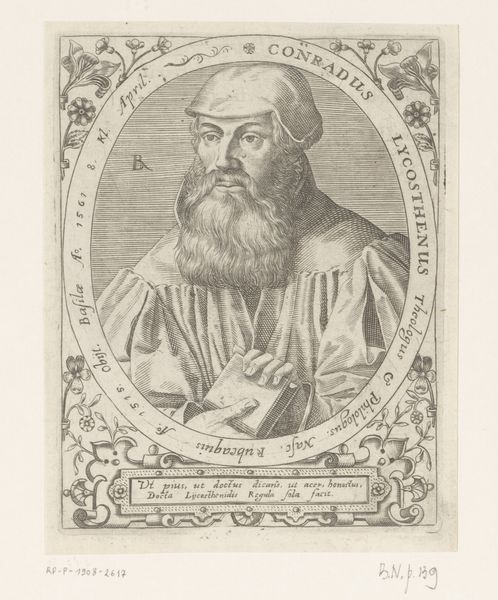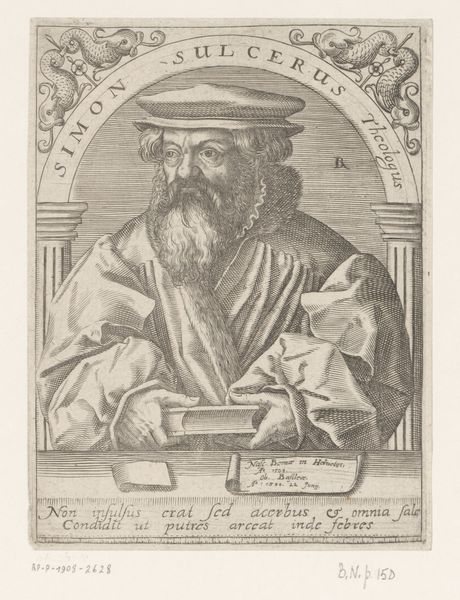
engraving
#
portrait
#
baroque
#
caricature
#
line
#
history-painting
#
engraving
Dimensions: height 166 mm, width 128 mm
Copyright: Rijks Museum: Open Domain
Editor: This is "Portret van Willem I de Veroveraar," or Portrait of William the Conqueror, an engraving by François Morellon La Cave, created sometime between 1706 and 1768. There's something about the lines that makes him look severe. What should we consider when interpreting this piece? Curator: Well, we must immediately contextualize portraits like this within the power structures they reflect and reinforce. The sitter, William, is depicted not just as an individual, but as a symbol of conquest, authority, and lineage, a lineage directly tied to colonial power. Consider how the engraving, as a medium, allows for the mass reproduction and dissemination of this image, embedding this particular narrative of power deep within the social fabric. Editor: So it’s less about accurately depicting William, and more about solidifying a historical narrative? Curator: Precisely. And we need to unpack the implications of that narrative. Whose stories are amplified and whose are silenced? How does the artist engage with this dynamic? Even the smallest element in his clothing invites questioning. What is he trying to say about the culture of that time and ours? Editor: That makes me see this engraving in a new way. It feels less like a simple historical portrait and more like a carefully constructed argument. I hadn't considered how an artist embeds certain social elements of a character in his outfits. Curator: Exactly. Art like this encourages a continual process of critical engagement. Now, consider the very act of conquest; how might we understand its continued resonance in the present? Editor: I will be on the lookout for the social narrative of artworks moving forward! Thanks so much for your time today.
Comments
No comments
Be the first to comment and join the conversation on the ultimate creative platform.

